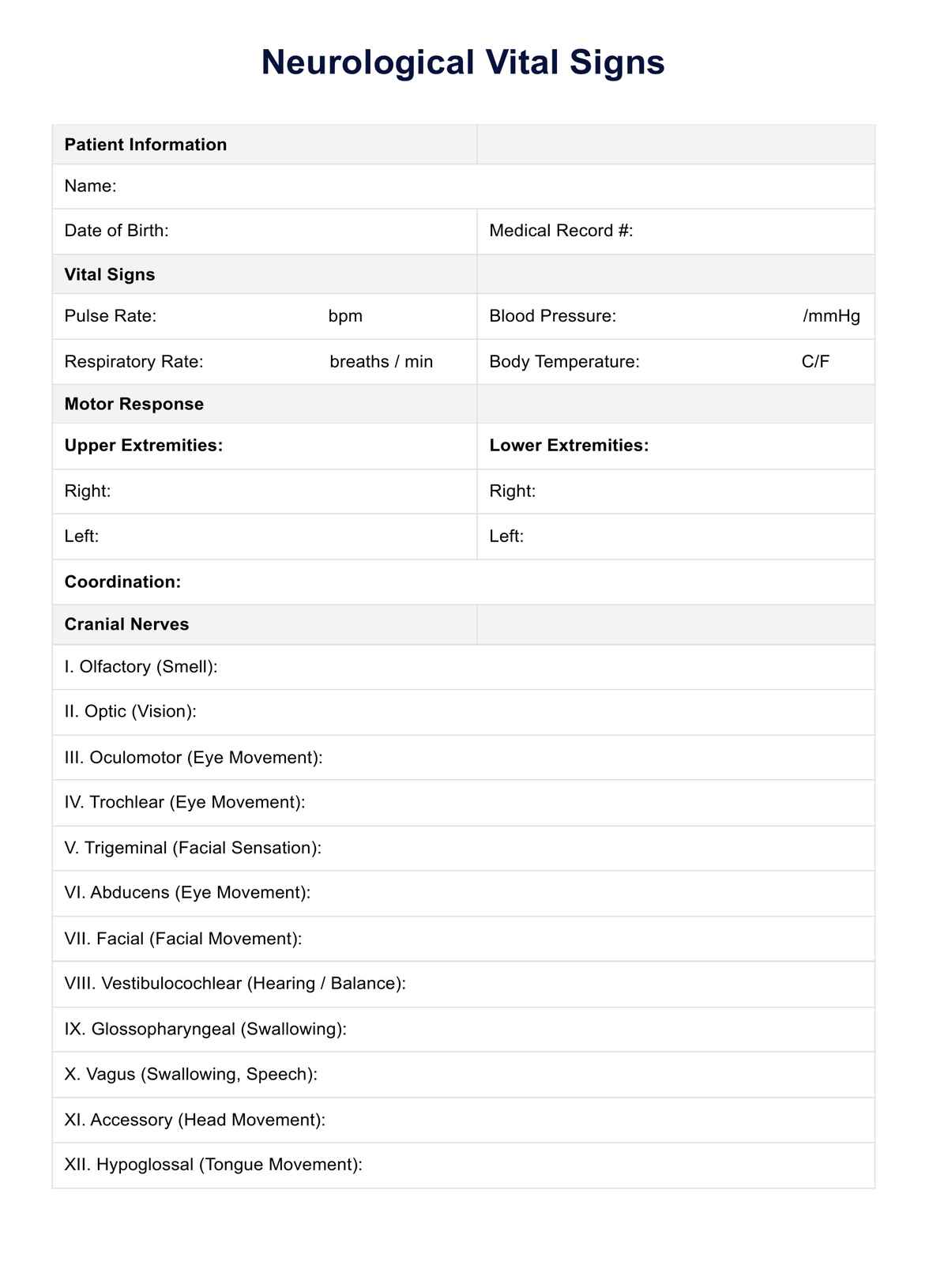To monitor neurological status, regularly assess vital signs like pulse rate, blood pressure, and respiratory rate. Additionally, conduct neurological examinations, evaluating motor responses, cranial nerves, and pupillary reactions to identify any changes or abnormalities promptly.

Neurological Vital Signs
Understanding neurological vital signs is crucial for assessing a patient's brain function. Get Carepatron's free PDF download with examples to deepen your knowledge.
Neurological Vital Signs Template
Commonly asked questions
Vital signs are integral to the neurological assessment as they provide crucial information about the overall health and functioning of the nervous system. Changes in pulse rate, blood pressure, and respiratory rate can indicate neurological issues or distress, guiding healthcare professionals in timely interventions.
Document a neurological assessment in nursing by recording detailed observations and findings. Include vital signs, motor responses, cranial nerve assessments, and any abnormalities observed during the assessment. Use clear and concise language to facilitate effective communication among healthcare providers and ensure comprehensive patient care.
EHR and practice management software
Get started for free
*No credit card required
Free
$0/usd
Unlimited clients
Telehealth
1GB of storage
Client portal text
Automated billing and online payments











